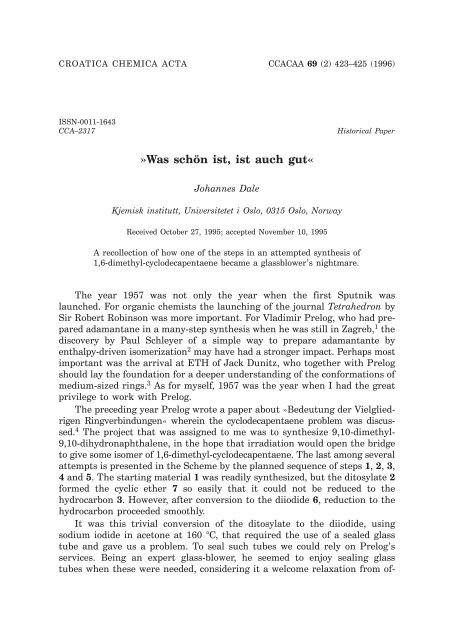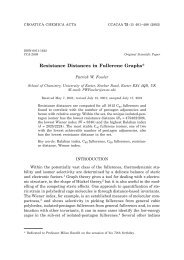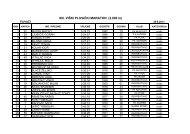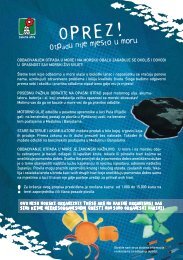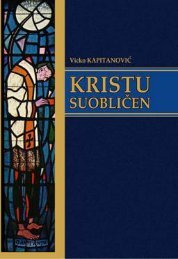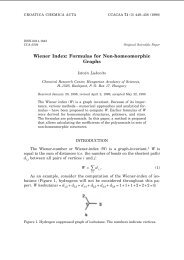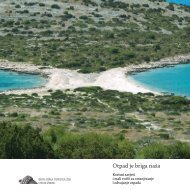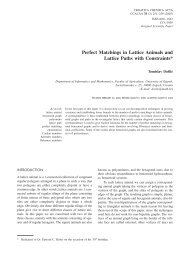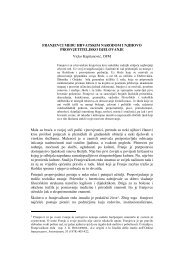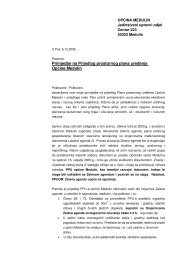VLADIMIR PRELOG Surprise Festschrift
VLADIMIR PRELOG Surprise Festschrift
VLADIMIR PRELOG Surprise Festschrift
You also want an ePaper? Increase the reach of your titles
YUMPU automatically turns print PDFs into web optimized ePapers that Google loves.
CROATICA CHEMICA ACTA CCACAA 69 (2) 423–425 (1996)<br />
ISSN-0011-1643<br />
CCA–2317<br />
Historical Paper<br />
»Was schön ist, ist auch gut«<br />
Johannes Dale<br />
Kjemisk institutt, Universitetet i Oslo, 0315 Oslo, Norway<br />
Received October 27, 1995; accepted November 10, 1995<br />
A recollection of how one of the steps in an attempted synthesis of<br />
1,6-dimethyl-cyclodecapentaene became a glassblower’s nightmare.<br />
The year 1957 was not only the year when the first Sputnik was<br />
launched. For organic chemists the launching of the journal Tetrahedron by<br />
Sir Robert Robinson was more important. For Vladimir Prelog, who had prepared<br />
adamantane in a many-step synthesis when he was still in Zagreb, 1 the<br />
discovery by Paul Schleyer of a simple way to prepare adamantante by<br />
enthalpy-driven isomerization 2 may have had a stronger impact. Perhaps most<br />
important was the arrival at ETH of Jack Dunitz, who together with Prelog<br />
should lay the foundation for a deeper understanding of the conformations of<br />
medium-sized rings. 3 As for myself, 1957 was the year when I had the great<br />
privilege to work with Prelog.<br />
The preceding year Prelog wrote a paper about »Bedeutung der Vielgliedrigen<br />
Ringverbindungen« wherein the cyclodecapentaene problem was discussed.<br />
4 The project that was assigned to me was to synthesize 9,10-dimethyl-<br />
9,10-dihydronaphthalene, in the hope that irradiation would open the bridge<br />
to give some isomer of 1,6-dimethyl-cyclodecapentaene. The last among several<br />
attempts is presented in the Scheme by the planned sequence of steps 1, 2, 3,<br />
4 and 5. The starting material 1 was readily synthesized, but the ditosylate 2<br />
formed the cyclic ether 7 so easily that it could not be reduced to the<br />
hydrocarbon 3. However, after conversion to the diiodide 6, reduction to the<br />
hydrocarbon proceeded smoothly.<br />
It was this trivial conversion of the ditosylate to the diiodide, using<br />
sodium iodide in acetone at 160 °C, that required the use of a sealed glass<br />
tube and gave us a problem. To seal such tubes we could rely on Prelog’s<br />
services. Being an expert glass-blower, he seemed to enjoy sealing glass<br />
tubes when these were needed, considering it a welcome relaxation from of-


